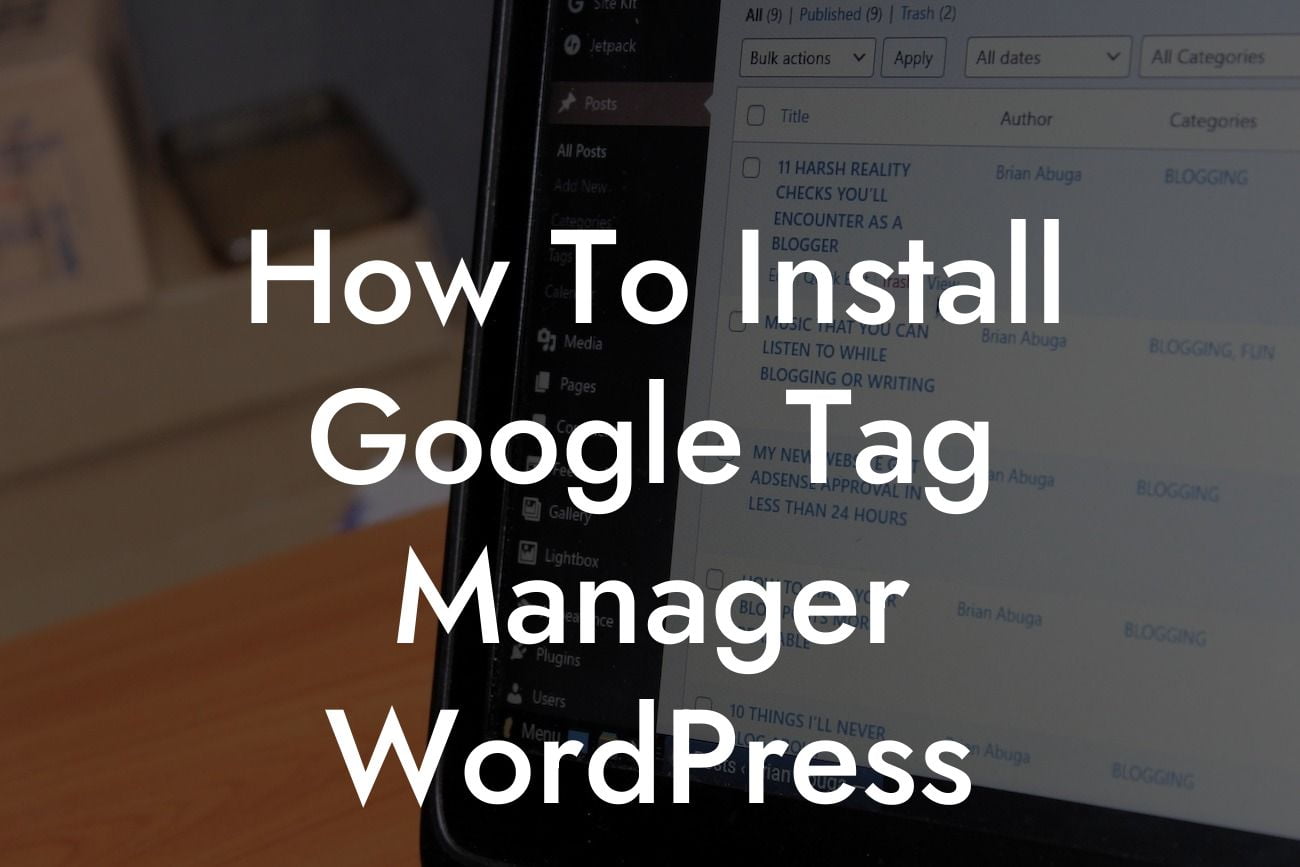---
Are you a small business owner or entrepreneur looking to take your online presence to the next level? If so, you've probably heard of Google Tag Manager. This powerful tool allows you to easily manage and deploy tags on your website without the need for manual coding. In this guide, we'll walk you through the step-by-step process of installing Google Tag Manager on your WordPress website. Say goodbye to tedious coding and hello to streamlined tag management. Let's dive in!
1. What is Google Tag Manager?
- Provide a brief explanation of Google Tag Manager and its benefits for website owners.
- Discuss how it simplifies the process of implementing and managing tags on your website.
Looking For a Custom QuickBook Integration?
- Highlight key features of Google Tag Manager that make it indispensable for small businesses.
2. Setting up a Google Tag Manager Account
- Explain the steps to create a Google Tag Manager account.
- Describe how to name the container and choose the appropriate target platform (in this case, WordPress).
- Guide readers through the process of setting up the initial container tag snippet.
3. Installing Google Tag Manager on WordPress
a. Installing the Google Tag Manager plugin
- Introduce the necessary plugin and explain its benefits.
- Provide a step-by-step guide on how to install the plugin from the WordPress dashboard.
b. Authenticating with Google Tag Manager
- Walk readers through the process of generating a container ID from their Google Tag Manager account.
- Help readers authenticate their website by adding the container ID to the plugin's settings.
4. Adding Tags and Triggers
- Explain the concept of tags and triggers in Google Tag Manager.
- Demonstrate how to add tags for common use cases, such as Google Analytics and Facebook Pixel.
- Teach readers how to set up triggers to determine when and where tags should fire on their website.
How To Install Google Tag Manager Wordpress Example:
Let's imagine you run an e-commerce website and want to track conversions using Google Ads. In this example, we'll show you how to add the Google Ads conversion tracking tag to your WordPress site using Google Tag Manager:
1. Create a new tag in Google Tag Manager.
2. Set the tag type as "Google Ads Conversion Tracking."
3. Configure the tag with your Google Ads conversion ID and label.
4. Choose a trigger, such as "All Pages," for the tag to fire on.
5. Save and publish the changes in Google Tag Manager.
Congratulations! You've successfully installed Google Tag Manager on your WordPress website. With this powerful tool at your disposal, you can now easily manage all your tags in one place, saving time and eliminating the need for manual coding. Take your online presence to new heights by exploring other informative guides on DamnWoo, and don't forget to try out our exceptional WordPress plugins. Share this article with fellow small business owners and entrepreneurs who can benefit from hassle-free tag management. Good luck on your journey to success!













